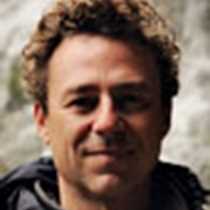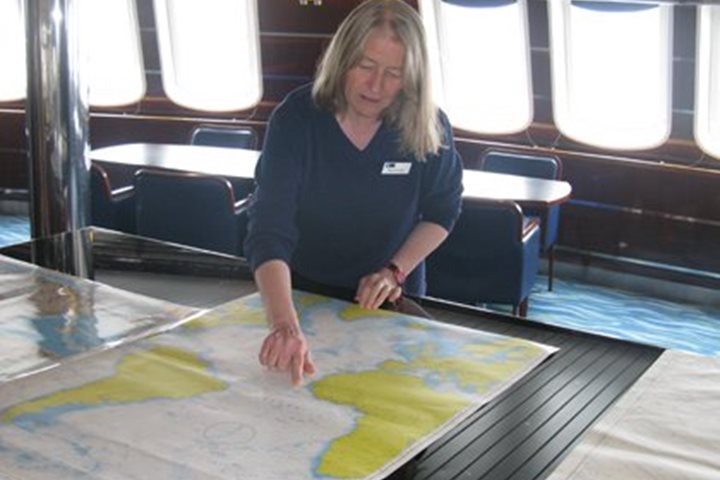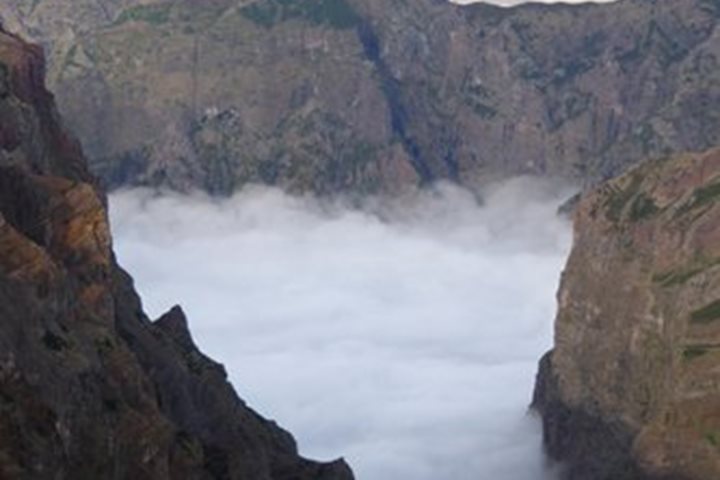The sun's crepuscule had yet to breach the horizon over Cadiz when we disembarked for our exploration of Seville, the fourth largest city in Spain and home to an impressive historical, cultural, and archeological legacy. We were eager to get a start on the day, but it was a time in the morning when most Spaniards were still sleeping.
This is, after all, a late-night culture. Spaniards are notorious for eating their dinner at around 11 p.m., sometimes later, and showing up at a restaurant anytime before 10 is a sure sign that you are a foreigner. Traditionally, businesses would shut down during the scorching afternoon heat to enable people to eat lunch, the largest meal of the day, followed by a rejuvenating siesta. While many storefronts are still shuttered between 2-5 p.m. in Spain, few still take the time to actually sleep, leading to a country suffering from mass sleep deprivation.
So it's no wonder there were very few people on the streets of Cadiz as our buses wound their way through the early-morning streets and headed off towards Seville. Cadiz was established by the Phoenicians and is thought to be the oldest continuously inhabited city in Western Europe. Ancient stonewalls, abandoned Roman aqueducts and other archeological marvels exist alongside modern apartment buildings and a shiny, new, glass-walled soccer stadium. We passed the tobacco factory where the main character in the Bizet opera Carmen worked (my favorite version of this story of passion, love, and betrayal is the Carlos Saura film Carmen, which is filled with unparalleled flamenco dancing and music).
As we crossed the Bay of Cadiz we could see the still-unfinished La Pepa Bridge, its roadway hanging precariously in the air with large gaps of open space. It was supposed to have been finished in 2012, but the economic crisis in Spain and the usual bureaucratic delays have meant the bridge won't be finished until this year at the earliest. This is, after the all, the country where Gaudi's Sagrada Familia church has been under construction in Barcelona since 1882 and there's no firm date yet on when it will be finished.
By the time we reached the outskirts of Cadiz, the sun had risen, giving the misty haze settling over the olive trees and grape vines a mystical, otherworldly character. As we traveled down the highway, our tour guide's lilting voice faded into the background as I began to imagine the strains of Spanish flamenco guitar plucking their way across the landscape.
We passed an exit sign for the town of Algeciras and I understood why this ghostly image had come to mind…this small city in the province of Cadiz was the birthplace of Francisco Gustavo Sanchez Gomes, who thankfully shortened his name to Paco de Lucia. On December 21, 1947, just minutes from where we were now driving, history's greatest flamenco guitarist was born, a man whose virtuosity helped bring flamenco the mainstream respect it had been missing.
Paco de Lucia was raised in a musical family, his father was a guitarist, and by the age of five, Paco was undergoing rigorous training in the mysterious art of flamenco. While all of Paco's brothers played, it was clear very early that young Paco was a prodigy. He appeared on the radio at age 11 and recorded his first album when he was 14. His 1970s recordings with flamenco singer Camarón de la Isla are considered the greatest classics of the genre. Over the years Paco expanded from traditional flamenco and began adding influences of jazz and classical music. His 1981 live album, Friday Night in San Francisco, recorded with guitarists John McLaughlin and Al Di Meola, is one of my personal favorite live albums of all time. This unbelievable performance by three magicians of the guitar will leave your jaw on the floor.
Paco de Lucia died of a heart attack on February 25th, 2014 while vacationing with his family in Playa del Carmen, Mexico. He was posthumously awarded the Latin GRAMMY for Album of the Year later that year. As we drove across the Andalusian countryside, Paco de Lucia's most famous song, "Entre Dos Aguas" echoed in my head like the moaning of ghost.
After an hour or so driving through the Spanish countryside, we arrived in Seville, entering the city via a grand boulevard lined by dramatic buildings built for the ill-fated Ibero-American Exposition of 1929. Intended to show the world that, even though it had lost all of its colonies in the Americas, Spain was still a powerful world force, the world's fair proved to be a boondoggle. It did not result in floods of tourists, as was hoped, and it happened to come on the cusp of the global economic decline after the Wall Street crash, not to mention the Spanish Civil War, which began in 1936.
The impressive buildings from that event still remain, culminating in the grandest of them all, the Plaza de España. An enormous pavilion built in a half circle to honor the Islamic influence on the Iberian Peninsula, the Plaza de España is unquestionably impressive. It has been a location in the films Lawrence of Arabia and Star Wars Episode II: Attack of the Clones, among others. We spent some time wandering around the immense courtyard.
We then headed over to Santa Cruz, the former Jewish quarter of the old city. The Jews were expelled from Spain in 1492, an auspicious year in Spanish history that also included the defeat of the last bastion of the Islamic Moors in Granada, not to mention Columbus's unintended "discovery" of the Americas. The tiny winding streets of the neighborhood are very picturesque, designed to maximize shade in the hot climate. No signs of the former inhabitants remain; synagogues were long ago destroyed or converted into churches. Apparently, there has been an effort to allow the descendants of Sephardic Jews (Jews who were expelled from Spain) to reclaim citizenship in Spain.
Our meanderings took us to the Alcázar, the royal palace and one of Seville's top attractions. Our Lindblad connections helped us skip right past a line that extended for hundreds of feet and enter the palace grounds. Divided into small groups led by expert local guides, we learned about the fascinating history of a building that looks as if it were built to house Islamic royalty, when in fact it was constructed long after the last Moors were expelled. This blend of Islamic and Christian architecture is called mudéjar, and Alcázar is perhaps is finest example. If you can't make it to Seville to see the impressive building in person, just check out the upcoming season of Game of Thrones, which uses it extensively as a set.
By now we had worked up a healthy appetite, so we strolled over to the Roblas Placentines restaurant for a meal of tapas, paella, and a heart-stopping sweet desert, with the excellent flamenco guitarists Jualma and Bernardo playing in the background.
Our final excursion was to the Seville Cathedral, the largest Gothic cathedral and the third largest church in the world. It’s an awe-inspiring place even today, so one can only imagine what an impression it must have made on visitors when it was completed in the early 1500s, after a 100-year construction period. Our visit to Seville happened to correspond to the Semana Santa celebrations, and the floor of the Cathedral was covered with wax droplets from the throngs of people that had paraded through the site in recent days. We spotted a few member of the numerous processions that take place during this week walking down the streets in their pointed hats that look ominously similar to Ku Klux Klan uniforms, although there is no connection whatsoever. It still was a little off-putting to see little plastic figurines in the Cathedral gift shop that might get you some awkward reactions if you brought them back to the U.S.
In addition to the architecture, the Cathedral houses an extraordinary art collection, one of the most impressive organs I have ever seen, and an elaborately decorated nave whose carved panels depicting scenes from the life of Christ rises to the sky. The Cathedral also houses about 150 grams of the remains of Christopher Columbus, held in a massive tomb commemorating a man who changed the course of human history (whether that was for the better is an issue of argument in many parts of the world).
Our visit to the Cathedral marked the end of our visit to Amazing Seville. We boarded the buses and headed back to the ship. It was a brief but magical taste of this historically and culturally rich city. Every time I hear the sounds of flamenco, I will think back on my journey to this very memorable destination.
Lest you think that Andalusian music is only flamenco, this region of Spain has also spawned some other musical phenomena that have taken the world by storm: "The Macarena" and Julio Iglesias. Let's just say weddings would never be the same without Andalucía.






